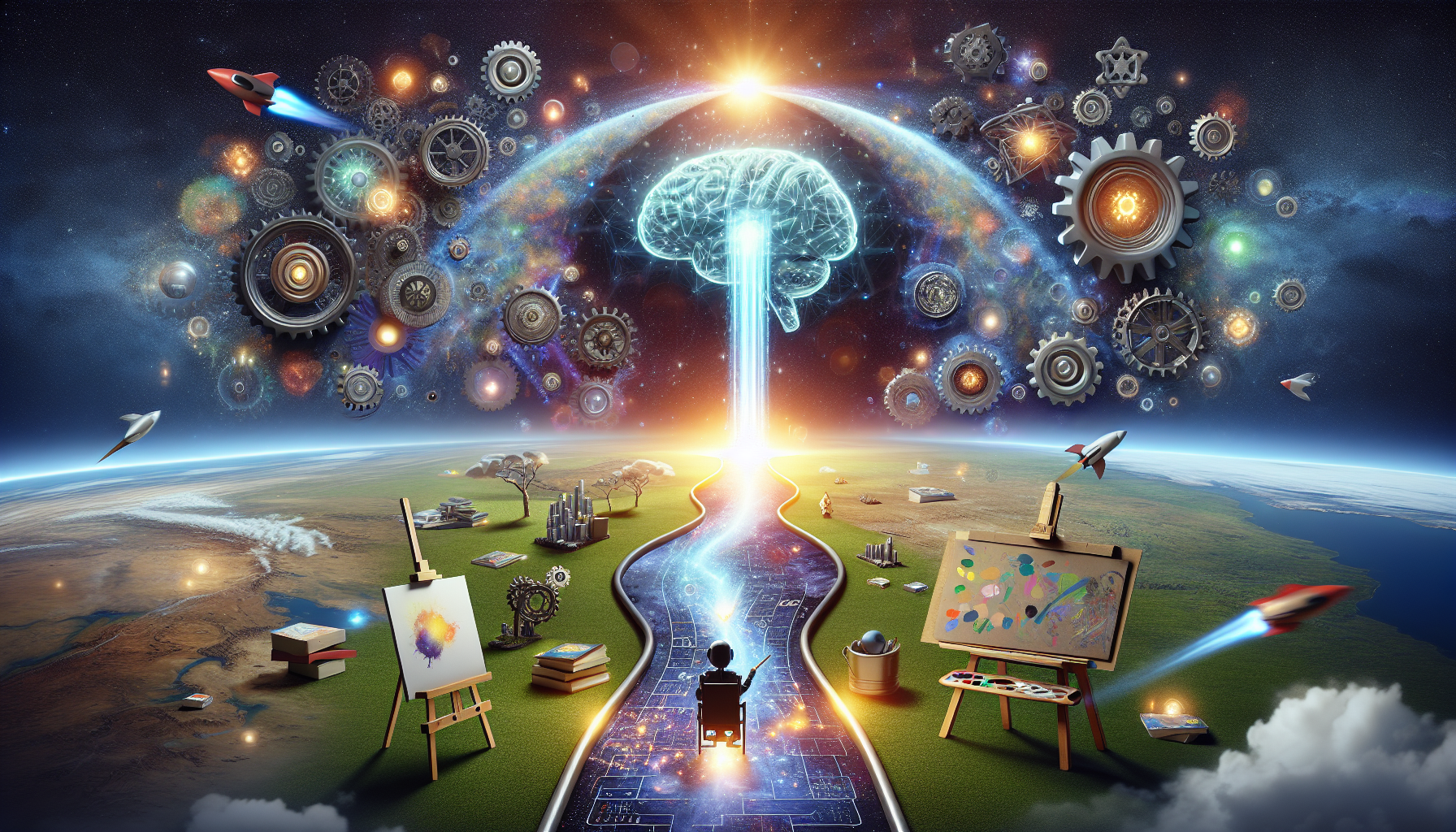Published at: July 11th, 2025

In the fast-paced world of digital marketing, creating content quickly and consistently is no longer optional. Brands, bloggers, and businesses all rely on fresh content to stay visible. But let’s be honest—writing takes time. That’s where an AI content generator comes in. These tools are changing the game. But how do they actually work? Let’s break it down in simple terms.
The Basics of AI Content Generation
Before diving into the nuts and bolts, let’s start with the basics. An AI-powered content generator is a tool that uses artificial intelligence to produce written content. This could be a blog post, a product description, or even a social media caption. It’s not just typing random words. The process is much more intelligent than that.
These tools rely on machine learning models. They’ve been trained on massive datasets—everything from books to blogs to academic articles. This training helps the AI understand how humans write. So when you give it a prompt, it knows what to do.
How AI Writes Content: Step-by-Step
One of the most common questions is: how AI writes content that actually makes sense? The process is more sophisticated than you might think.
1. Understanding the Prompt
First, the AI reads your input. This could be a headline, a short brief, or even a few keywords. The AI tries to understand what kind of content you want. This step involves something called natural language processing (NLP), which helps the system “read” and interpret your request.
2. Predicting the Next Word
At its core, the AI is making predictions. Once it understands the topic, it predicts the next word in the sentence—over and over again—until the content is complete. This prediction is based on patterns it learned during training.
3. Maintaining Structure
Good content isn’t just about words—it’s about structure. AI content generators have learned how to write intros, body paragraphs, and conclusions. They also know how to use headings, bullet points, and transitions to keep the flow natural.
Key Technologies Behind the Scenes
To understand the AI content creation process, it helps to know a bit about the technology involved. The most advanced tools use models like GPT (Generative Pre-trained Transformer). These models are trained on billions of text samples. They don't just spit out data—they learn context, tone, and grammar.
Some tools go a step further. They include features like tone adjustment, keyword integration, and even SEO optimization. This makes them valuable for marketers and writers alike.
Why Are AI-Powered Writing Tools So Popular?
There’s a reason these tools are everywhere. AI-powered writing tools save time. They can help people write faster without sacrificing quality. They’re also useful for overcoming writer’s block. Sometimes all you need is a rough draft to get your ideas flowing.
Businesses also love them for scalability. If you need to write hundreds of product descriptions or dozens of landing pages, AI can handle the load. You still need a human touch for editing, but the heavy lifting is done.
Common Use Cases
You might be wondering where exactly these tools are used. Here are a few popular examples:
-
Blog posts – Perfect for quick drafts or content ideas.
-
Email marketing – AI can generate email copy based on campaign goals.
-
E-commerce – Write product titles and descriptions at scale.
-
Social media – Create captions, hashtags, and short posts in seconds.
-
SEO content – Generate keyword-rich articles that rank.
Each of these use cases benefits from the AI content generator’s ability to mimic natural writing.
The Human Touch Still Matters
It’s easy to get excited about automation. But while AI tools are powerful, they’re not perfect. They can miss the emotional tone or subtle nuances that human writers naturally include. That’s why editing is still important.
A good workflow includes both AI and human input. Let the AI draft your content, then revise it for clarity, tone, and engagement. This hybrid approach brings out the best in both.
The Role of SEO in AI-Generated Content
One major benefit of these tools is SEO optimization. Many AI generators are designed to work with SEO tools or plugins. This means they can naturally include keywords, structure content for readability, and even write meta descriptions.
For example, when exploring how AI generates content, you’ll notice that the best tools don’t just write—they optimize. They know how to place keywords like “AI-powered writing tools” or “AI content creation process” where they matter most—without overstuffing. That balance is key for ranking well on search engines.
Challenges and Limitations
No technology is without flaws. AI-generated content can sometimes be repetitive or generic. It might also struggle with complex or niche topics. That’s why you shouldn’t rely on it blindly.
Another issue is factual accuracy. Since the AI is trained on text from the internet, it may repeat outdated or incorrect info. Always verify facts and data, especially for professional or technical content.
Finally, tone can be a challenge. AI doesn’t understand human emotions. It mimics tone based on patterns but doesn’t truly feel what it's writing. That’s where your voice and experience shine.
Will AI Replace Writers?
This is the million-dollar question. The answer? Not quite.
AI is a powerful assistant, but it doesn’t replace human creativity. It’s great for saving time, brainstorming ideas, and scaling content efforts. But it lacks intuition, originality, and deep understanding. The best content still comes from human insight.
Instead of seeing AI as competition, think of it as a tool. When used correctly, it enhances your workflow. It lets you focus on storytelling, strategy, and voice—things machines can’t replicate.
Choosing the Right Tool
Not all AI tools are created equal. When selecting an AI content generator, look for the following features:
-
Ease of use – A good interface matters.
-
Customization options – Tone, style, and format controls.
-
SEO integration – Helps with keyword usage and structure.
-
Output quality – Readability and coherence are essential.
-
Support and updates – The best tools are always evolving.
Try a few tools and see what fits your needs. Some popular options include Jasper, Writesonic, Copy.ai, and others. Most offer free trials, so you can test them without commitment.
Future of AI Content Creation
The future looks bright for AI content creation. We’re already seeing tools that can match tone, learn from user preferences, and even suggest improvements based on performance. As models improve, we can expect more personalized, accurate, and useful outputs.
But with this growth comes responsibility. Users must use these tools ethically. That means being transparent, avoiding plagiarism, and respecting originality. AI should support human work—not replace or cheat it.
Final Thoughts
Understanding how an AI-powered content generator works helps you use it better. It’s not magic. It’s a clever combination of training data, prediction algorithms, and optimization tools. These systems analyze patterns, learn context, and generate content that reads almost like a human wrote it.
But remember—how AI writes content is different from how humans do. The best results come when both work together. With the right balance, you can save time, scale content, and still maintain quality.
If you’re just starting out with AI-powered writing tools, take it slow. Test, tweak, and always review. AI is a helper, not a replacement. And as long as you’re using it wisely, it can become one of your most valuable tools in content creation.

